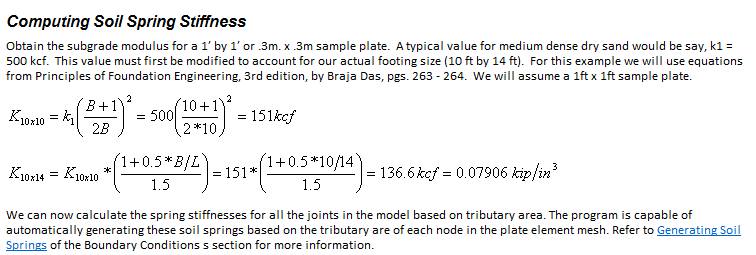JoshPlumSE
Structural
- Aug 15, 2008
- 10,459
All -
When designing a large mat foundation we (i.e. structural engineers) will typically use the modulus of subgrade reaction as the basis for the compression only soil springs we include in our analysis model.
Ideally, I get this value from the geotechnical engineer for the project. In addition, we usually n get formulas for adjusting this modulus of subgrade reaction based on the size of the mat. These formulas are usually pretty standard and I can find some variation of them in my foundation text books (Braja Das, Bowles, et cetera) However, the formulas that I recall seeing are all based on square or rectangular foundations.
Does anyone have any guidance for how to adjust these modulus of subgrade reaction for a circular or octagonal mat? I don't recall seeing these types of formulas before.
My tendency would be to use the same adjustment that I'd use for a square of the same contact area. However, I'd like to have a better reference for why I'm doing this other than just my own educated guess.
Thanks in advance for any assistance you can provide.
When designing a large mat foundation we (i.e. structural engineers) will typically use the modulus of subgrade reaction as the basis for the compression only soil springs we include in our analysis model.
Ideally, I get this value from the geotechnical engineer for the project. In addition, we usually n get formulas for adjusting this modulus of subgrade reaction based on the size of the mat. These formulas are usually pretty standard and I can find some variation of them in my foundation text books (Braja Das, Bowles, et cetera) However, the formulas that I recall seeing are all based on square or rectangular foundations.
Does anyone have any guidance for how to adjust these modulus of subgrade reaction for a circular or octagonal mat? I don't recall seeing these types of formulas before.
My tendency would be to use the same adjustment that I'd use for a square of the same contact area. However, I'd like to have a better reference for why I'm doing this other than just my own educated guess.
Thanks in advance for any assistance you can provide.

